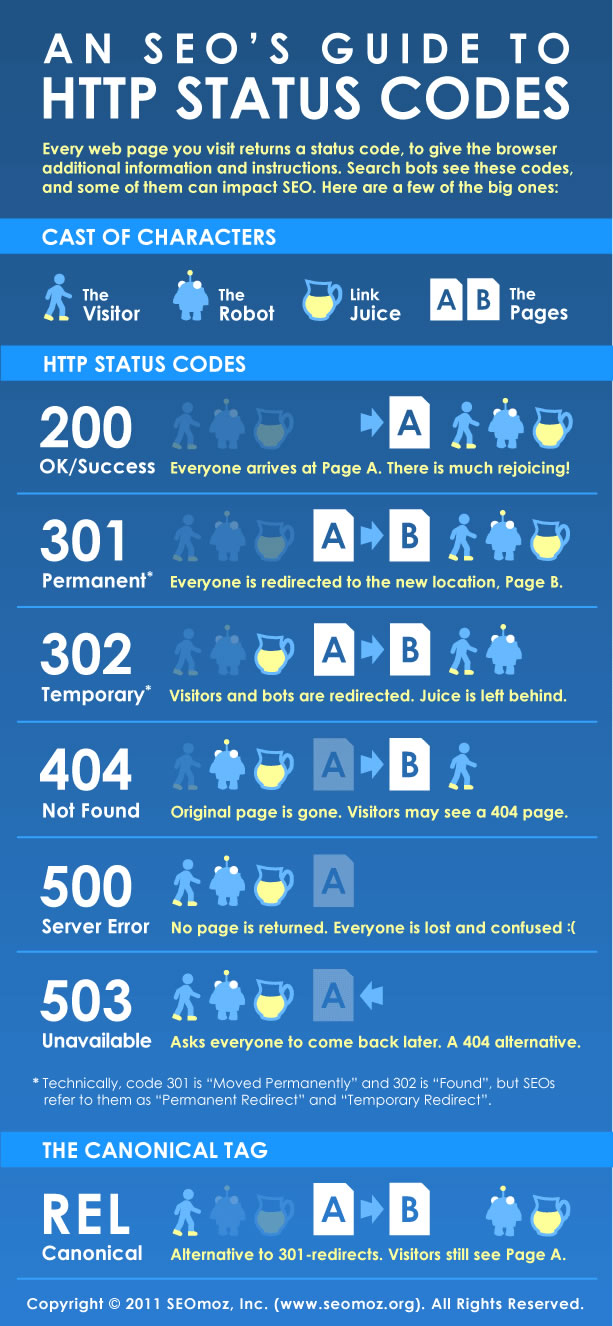
How SEO and “301 Permanent Redirect” Affect End Users
End users, or visitors to the Internet, begin a web search by typing key words into their preferred browser. They are immediately rewarded with a plethora of information choices. Most users are confident that every relevant page choice is among those choices, and are unaware of how 301 Permanent Redirect and SEO affect the choices presented.
However, with a little understanding of the way SEO (Search Engine Optimization) operates, users can obtain search results that are more relevant and more closely honed to their specific needs.
It is important to note that while the user knows the information they desire; the Robot “knows” only the written key words. The Robot is the crucial link between the human user and the knowledge available, yet is not “smart” in the typical sense of the word so appropriate word choices are extremely important.
Every web page visited will produce a status code for the browser. This code enables the search bot to “see” these codes, which can impact SEO and a user’s successful results.
A status code of 200 is a successful transaction between all components of a website search. This is the optimal status code.
Status codes of 301 or 302 are redirect codes to a new location. While both are successful to the user, only 301, the permanent redirect, allows the link to be successful between the old and new location.
The REL Cannonical tag is considered an alternative to a 301- redirect. However, the REL is designed to direct the bot to the preferred page among many that are very similar. This is preferable to the 301 in terms of browser instructions. The user sees the original page as well as the redirected page.
Status codes of 404, 500 or 503 represent a user’s unsuccessful visit to a particular page. Code 404 redirects to a 404 page, informing the user that the original page is no longer on the web. Status code 503 is used as a 404 alternative. However, it doesn’t tell user whether or not the original page still exists. Code 500 denotes a server error. The user does not know if the page still exists, only that our browser’s bot did not have a travel map to that page.
Users experiencing a 500 or 503 status code can use a different server and retry these pages. The Robot from a different server may be more successful in finding the page.
HTTP Status Codes enhance the browser’s ability to find those pages a user expects when making information choices. 301 Permanent Redirect and SEO are vitally important tools implemented to ensure a higher volume of successful searches by the user.
Although millions of people visit Brandon's blog each month, his path to success was not easy. Go here to read his incredible story, "From Disabled and $500k in Debt to a Pro Blogger with 5 Million Monthly Visitors." If you want to send Brandon a quick message, then visit his contact page here.
